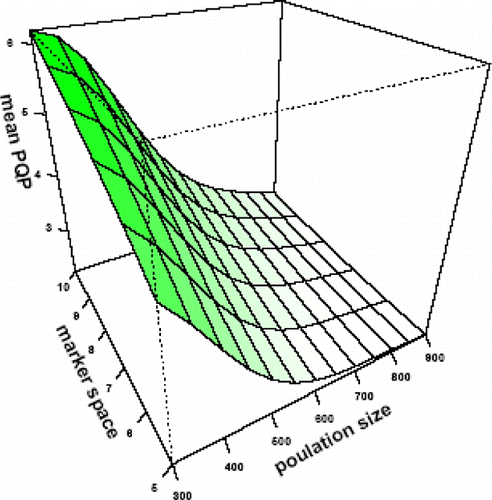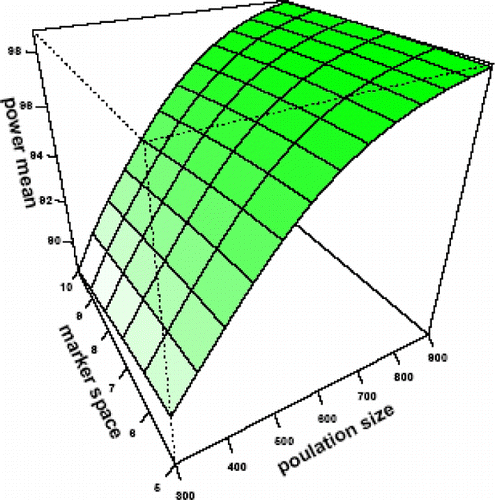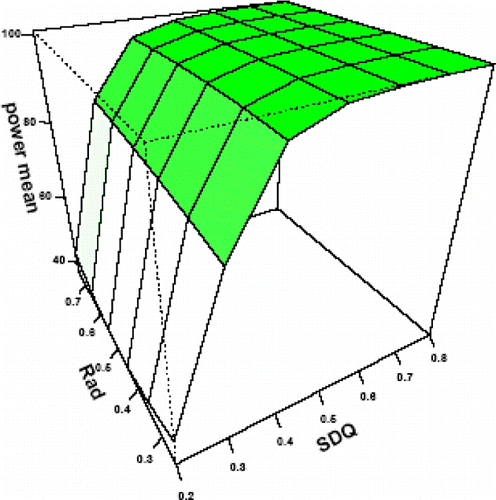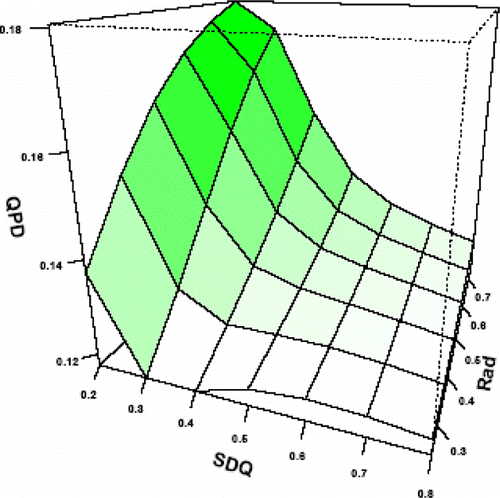Figures & data
Table 1. The different combinations of simulated parameters which were analysed using optimal ANN model.
Table 2. Powers of different combinations of parameters with SDQ of 0.2.
Table 3. Average precision of QTL position (in CM) in combination of PS, SDQ and MS.
Table 4. Average precision of estimated QTL position (in CM) in the context of SDQ, Rad and rpQ.
Table 5. Effects of PS, MS and SDQ on precision of estimated additive effect.
Table 6. Average precision of combined different levels of PS, SDQ and MS on estimated dominance effect.
Table 7. Average precision of estimated dominance effect of different SDQ, Rad and rpQ levels combination.
Table 8. Adequacy parameters of the best ANN model and their standard deviations for every HK efficiency parameters.
Plot 3. Effect of population size and marker space on mean of precision of QTL additive effect (PQA).
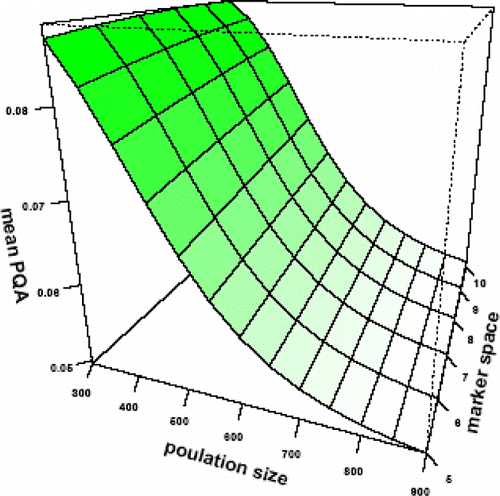
Plot 4. Effect of population size and marker space on mean of precision of QTL dominance effect (PQD).

